
Most Common – Plaque Psoriasis
Plaque Psoriasis is the most common variation of Psoriasis that afflicts 80 % of psoriasis sufferers. The signs of this type include raised,red or pink patches and lesions covered with a whitish/silvery build-up of dead skin cells, called scale. Plaque Psoriasis flares can come and go, with some flares lasting for years. It typically is localized on:
- knees
- scalp
- elbows
- the lower back
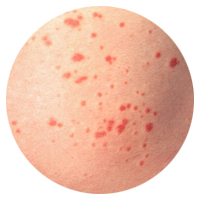
Guttate Psoriasis
Guttate Psoriasis is considered the second most typical type of psoriasis after plaque psoriasis. It affects 1 out of 10 psoriasis sufferers. It appears as tiny, red or pink spots that look like drops scattered on the skin. Typically, guttate eruptions are not as thick as plague patches, and they can appear on:
- the trunk
- scalp
- face
- ears
- upper arms
- thighs
- limbs
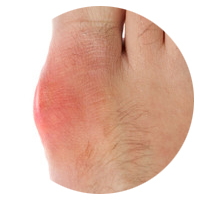
Psoriatic Arthritis
Statistics from the National Psoriasis Foundation say that about 35 percent of psoriasis sufferers end up developing psoriatic arthritis within 10 years of the onset of psoriasis. The common manifestations of this form of psoriasis are pain in the limbs, stiff joints, and swelling of fingers/toes. Any signs of psoriatic arthritis require prompt medical care. It is critically important to start treatment as soon as possible; to prevent or slow down joint damage.
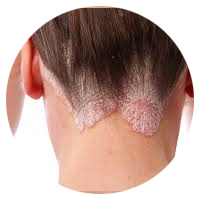
Inverse Psoriasis
Inverse Psoriasis appears as distinctive red lesions in skin folds and recesses. Unlike plaque psoriasis that is usually scaling and peeling, inverse psoriasis is shiny and smooth. It is called inverse because it does not affect the outer skin surfaces, but the body folds and private areas. Excessive rubbing by clothing and perspiration can significantly aggravate this condition.
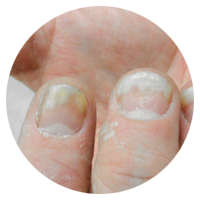
Nail Psoriasis
One out of every two psoriasis sufferers also has nail psoriasis. Its symptoms are similar to nail fungus: nail pain accompanied by nail separation, changes of the nail plate coloring and nail pitting.

Pustular Psoriasis
Pustular Psoriasis is a uncommon form of psoriasis and affects mostly adults. It shows up first with reddening followed by flaking and eruption of pus-filled bumps. It can be very serious and requires immediate medical help. Symptoms, which characterize pustular psoriasis include fever, tremors, pounding heartbeat, nausea and muscle weakness.
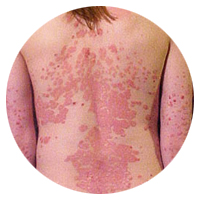
Erythrodermic Psoriasis
Erythrodermic Psoriasis is a rare type of psoriasis that affects 1-2% of psoriasis sufferers in their lifetime. The condition is characterized by severe pain, irritation, and bright-red inflammation that generally covers the entire body. Like pustular psoriasis, erythrodermic psoriasis is very serious and must be treated immediately by medical professionals without delay. Signs typically include quickened heartbeat and body temperature swings which cause protein and fluid loss that can be life threatening if left untreated.
The information in this article is not meant to substitute the medical advice of a medical professional. doctor. We never stop updating and improving the content of our website. Should you have any comments regarding the content or would like to share your feedback with us, please, send us an email on info@lomalux.com
